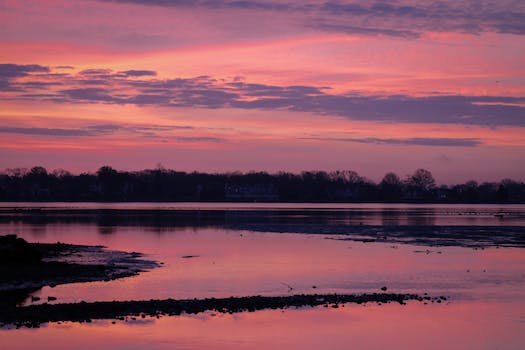Table of Contents
- Exploring the Historic Landmarks of Connecticut: A Guide to the Nutmeg State’s Most Iconic Sites
- The History Behind Connecticut’s National Historic Landmarks: A Look at the People and Events That Shaped the State
- Exploring Connecticut’s National Historic Landmarks: A Tour of the State’s Most Significant Sites
- The Architecture of Connecticut’s National Historic Landmarks: A Look at the Unique Styles and Structures That Make These Sites Special
- Q&A
“Connecticut: Where History Comes Alive!”
Connecticut is home to a number of National Historic Landmarks, which are sites that have been designated by the United States government as being of national significance. These landmarks are located throughout the state and represent a variety of different eras and styles of architecture. From the colonial-era homes of the early settlers to the grand estates of the Gilded Age, these landmarks provide a glimpse into the history of Connecticut and the United States. In this article, we will explore some of the most notable National Historic Landmarks in Connecticut.
Exploring the Historic Landmarks of Connecticut: A Guide to the Nutmeg State’s Most Iconic Sites

Welcome to Connecticut, the Nutmeg State! Home to some of the most iconic landmarks in the United States, Connecticut is a great place to explore and learn about the history of our nation. From the oldest public art museum in the country to the oldest continuously operating lighthouse in the Western Hemisphere, Connecticut has a wealth of historic sites to explore.
Let’s start with the Wadsworth Atheneum Museum of Art in Hartford. Founded in 1842, this is the oldest public art museum in the United States. It houses a collection of over 50,000 works of art, including masterpieces from the Renaissance, Baroque, and Impressionist periods.
Next, head to Mystic Seaport, the nation’s leading maritime museum. Located in Mystic, Connecticut, this museum is home to a variety of historic ships, including the Charles W. Morgan, the last surviving wooden whaling ship in the world. Visitors can also explore the museum’s collection of artifacts, including tools, clothing, and photographs.
If you’re looking for a unique experience, visit the Gillette Castle State Park in East Haddam. Built in 1919 by actor William Gillette, this castle is a stunning example of Gothic Revival architecture. The castle is surrounded by a beautiful park, complete with hiking trails and picnic areas.
Finally, no trip to Connecticut would be complete without a visit to the New London Ledge Lighthouse. Built in 1760, this is the oldest continuously operating lighthouse in the Western Hemisphere. Visitors can climb to the top of the lighthouse for a breathtaking view of the Long Island Sound.
So, what are you waiting for? Grab your camera and explore the historic landmarks of Connecticut!
The History Behind Connecticut’s National Historic Landmarks: A Look at the People and Events That Shaped the State
Connecticut is a state with a rich history, and its many National Historic Landmarks are a testament to the people and events that have shaped the state. From the first English settlement in the 1600s to the Revolutionary War and beyond, Connecticut has been a major player in the history of the United States. Here’s a look at some of the people and events that have made Connecticut the state it is today.
The first English settlement in Connecticut was established in 1633 by Thomas Hooker and his followers. Hooker was a Puritan minister who had been exiled from Massachusetts for his religious beliefs. He and his followers founded the city of Hartford, which became the capital of Connecticut. The settlement of Hartford was the first step in the formation of the Connecticut Colony, which was officially established in 1636.
The Revolutionary War was a major event in Connecticut’s history. The state was a major supplier of arms and ammunition to the Continental Army, and many of the battles of the war were fought in Connecticut. The Battle of Groton Heights, which took place in 1781, was a major victory for the Continental Army and helped to turn the tide of the war.
Connecticut was also home to some of the most influential figures of the Revolutionary War. Nathan Hale, a Connecticut schoolteacher, was a spy for the Continental Army and was famously executed by the British. Benedict Arnold, a Connecticut native, was a major general in the Continental Army before he defected to the British side.
Connecticut was also home to some of the most influential figures of the Industrial Revolution. Eli Whitney, a Connecticut native, invented the cotton gin, which revolutionized the cotton industry. Samuel Colt, another Connecticut native, invented the Colt revolver, which revolutionized the firearms industry.
Connecticut has also been home to some of the most influential figures in American politics. Roger Sherman, a Connecticut native, was one of the signers of the Declaration of Independence and was a major figure in the Constitutional Convention. Noah Webster, another Connecticut native, was a major figure in the development of American English and wrote the first American dictionary.
These are just a few of the people and events that have shaped Connecticut’s history. From the first English settlement to the Revolutionary War and beyond, Connecticut has been a major player in the history of the United States. Its many National Historic Landmarks are a testament to the people and events that have shaped the state.
Exploring Connecticut’s National Historic Landmarks: A Tour of the State’s Most Significant Sites
Welcome to Connecticut, home to some of the most significant sites in the United States! From Revolutionary War battlefields to the homes of famous authors, Connecticut is full of history and culture. In this guide, we’ll explore some of the state’s most important National Historic Landmarks. So grab your walking shoes and let’s get started!
First up is the Mark Twain House & Museum in Hartford. This is the home of the beloved author of classics like The Adventures of Tom Sawyer and The Adventures of Huckleberry Finn. The house is a beautiful example of Victorian Gothic architecture and is filled with artifacts from Twain’s life.
Next, we’ll head to Mystic Seaport, the largest maritime museum in the United States. Here, you can explore a recreated 19th-century seafaring village, complete with a working shipyard and a fleet of historic vessels.
If you’re looking for a more modern experience, you can’t miss the Yale University Art Gallery in New Haven. This gallery houses an impressive collection of art from around the world, including works by Picasso, Monet, and Rembrandt.
For a taste of Revolutionary War history, visit the Fort Griswold Battlefield State Park in Groton. This is the site of a 1781 battle between American and British forces, and it’s now a popular spot for picnics and hiking.
Finally, no trip to Connecticut is complete without a visit to the Gillette Castle State Park in East Haddam. This castle was built by the famous actor William Gillette in 1919 and is now a popular tourist attraction.
So there you have it – a tour of some of Connecticut’s most significant National Historic Landmarks. Whether you’re a history buff or just looking for a fun day trip, these sites are sure to provide an unforgettable experience.
The Architecture of Connecticut’s National Historic Landmarks: A Look at the Unique Styles and Structures That Make These Sites Special
Connecticut is home to some of the most unique and beautiful National Historic Landmarks in the United States. From the iconic Mark Twain House in Hartford to the historic Mystic Seaport, these sites are a testament to the state’s rich history and culture. Each of these landmarks has its own unique architecture that makes it stand out from the rest. Let’s take a look at some of the most interesting and impressive architectural styles and structures that make these sites so special.
The Mark Twain House in Hartford is a stunning example of Victorian Gothic Revival architecture. Built in 1874, the house features a variety of intricate details, including a grand entrance hall, a grand staircase, and a variety of stained glass windows. The house is also home to a variety of artifacts from Mark Twain’s life, including his writing desk and a collection of his books.
The Mystic Seaport is a living museum that celebrates the maritime history of Connecticut. The site features a variety of historic buildings, including a 19th-century shipyard, a lighthouse, and a variety of other structures. The architecture of the site is a mix of traditional New England styles, such as Colonial and Federal, as well as more modern styles, such as Art Deco.
The Gillette Castle in East Haddam is a unique structure that was built by actor William Gillette in 1919. The castle features a variety of interesting architectural details, including a grand entrance hall, a grand staircase, and a variety of stained glass windows. The castle also features a variety of unique features, such as a secret passageway and a hidden room.
The Yale University Art Gallery in New Haven is a stunning example of Beaux-Arts architecture. Built in 1832, the gallery features a variety of impressive details, including a grand entrance hall, a grand staircase, and a variety of stained glass windows. The gallery is also home to a variety of artwork from around the world, including works by Rembrandt, Monet, and Picasso.
These are just a few of the many unique and impressive architectural styles and structures that make Connecticut’s National Historic Landmarks so special. From the grandeur of the Mark Twain House to the unique features of the Gillette Castle, these sites are a testament to the state’s rich history and culture. Whether you’re a history buff or just looking for a unique experience, these sites are sure to impress.
Q&A
Q1: How many National Historic Landmarks are there in Connecticut?
A1: There are currently 24 National Historic Landmarks in Connecticut.
Q2: What is the oldest National Historic Landmark in Connecticut?
A2: The oldest National Historic Landmark in Connecticut is the Joseph Webb House in Wethersfield, which was designated in 1960.
Q3: What is the most recently designated National Historic Landmark in Connecticut?
A3: The most recently designated National Historic Landmark in Connecticut is the Harriet Beecher Stowe House in Hartford, which was designated in 2017.
Q4: What is the most visited National Historic Landmark in Connecticut?
A4: The most visited National Historic Landmark in Connecticut is the Mark Twain House & Museum in Hartford, which attracts over 100,000 visitors each year.In conclusion, Connecticut is home to many national historic landmarks that are important to the state’s history and culture. These landmarks are a reminder of the state’s past and serve as a reminder of the importance of preserving our history. From the homes of famous authors to the sites of important battles, these landmarks are a testament to the state’s rich history and culture.
![]()










